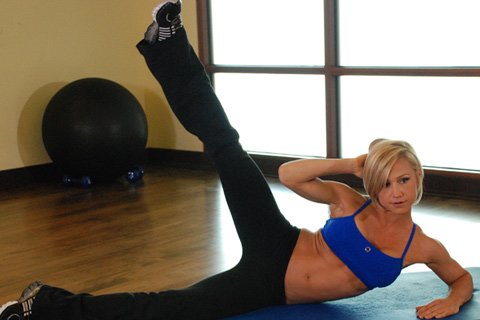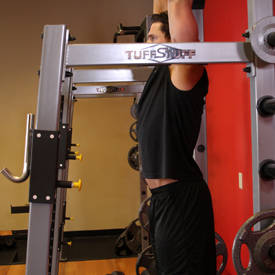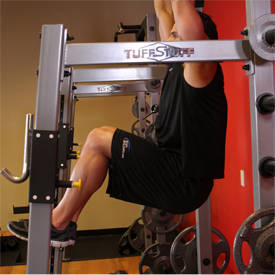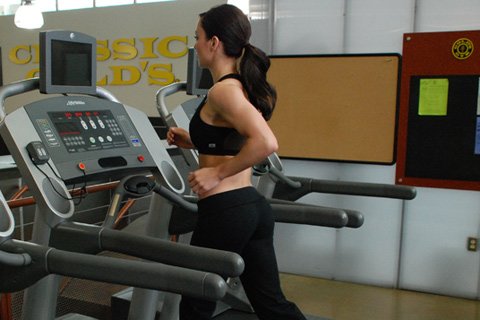Everybody has a routine. Some of us lift weights six days a week, or run every morning while others do Yoga every second night. What do these all have in common? Odds are that few of us ever seriously deviate from our routine. After all that's why it's called a "routine", you're not supposed to stray off course right? Well, not necessarily.
The problem is that we frequently get a little too comfortable with our routine. We stop trying new exercises and we resist stepping outside our comfort zone. This complacency is of course self-defeating; one of the central concepts behind fitness training is exposing our bodies to new conditions.

1. Push Yourself Out Of Your Comfort Zone 
"That's what most people lack, is having the guts. The guts to go in and just say, 'I'll go through and I don't care what happens.'" - Arnold Schwarzenegger.
He was talking about training intensity. Pushing ourselves out of our comfort zone is something that many people are unable to do. Many of us get stuck doing more or less the same thing day in day out, and stop forcing ourselves into new territory.
It's important to be able to push ourselves within our routine, and also beyond it when necessary. As many people lack training intensity, they also lack variety. There are many different systems of exercise (from bodybuilding to Yoga) and they all have something to offer, you probably just don't know it yet.

2. Real Life Fitness Tests 
We have to remember that there are many different meanings of "fitness". Limit strength, cardiovascular conditioning, flexibility, balance, and body control are all parts of the complete package.
If you are a specialist, for example you seriously weight train for 60 minutes a day, 5 days a week. Or you're hardcore into Yoga and you take 5 classes per week. If you never experiment with methods outside your specialty, you might not realize that you're missing out on beneficial training methods and what a lot of fun they can be too.
Weight training builds serious strength and power. However, many people who lift weights often forget to stretch properly. Over time this will not only increase your risk of injury but decrease your performance as well.
It's also important to remember that there are many stabilizer muscles in the body related to things like good posture and balance that don't get a functional workout strictly using free weights or machines. This is the difference between so-called 'gym strength' and 'functional strength'.
Gym strength is the strength required to move a weight in the gym such as a dumbbell or barbell. Functional strength is the kind of strength required in real life situations such as moving awkwardly shaped objects and other people. The two are related, but not quite the same.
Systems like Yoga and Pilates are not as effective at building limit strength as weight training, but they can work wonders for flexibility, balance, muscular endurance and building a functional core. Also this kind of low impact, low-resistance exercise is frequently used for rehabilitation and injury prevention.
Cardiovascular training is without a doubt one of today's most popular forms of exercise. As with weights many people get complacent with cardio training. It's easy to get into the routine of doing 30 minutes on the elliptical or treadmill every time we hit the gym.
This may seem fine and well but our bodies have a tendency to adapt to training stimulus and this is one of the most common reasons why results tend to taper off. In order to continue burning serious calories it's important to change things up.
Think about the type of fitness that is required in everyday life. This is important because for many of us it's the reason we work so hard. We seek to improve our quality of life.
Sometimes you have to run to catch a bus (cardiovascular fitness), help a friend move furniture (strength and power), or sit and stand in awkward positions (body control and flexibility). These all require different kinds of strength and fitness, they put different kinds of stress on our muscles.
Life has a way of putting all the things we do in the gym to the test. Real life tends to test us physically in ways we don't directly train for. This is why it's vitally important to mix it up in the gym every now and then. Unless you're seriously training to be the next Mr. Olympia, in other words, unless your fitness goals are extremely focused, this is something to take into consideration.

3. Free Weights Vs. Machines 
Many people have an addiction to machines (such as the Nautilus and Hammer Strength equipment), and are intimidated by the free weights section. This is very common and perfectly understandable.
The gym can be an intimidating and judgmental place, especially if you're relatively new to it. The problem is that machines by design control the range and plane of motion. In other words they do quite a bit of the work for you by making sure that the weight never strays from a predetermined path.
A routine consisting of exercises performed mostly on machines does not do a very good job of building what's called "functional strength", in other words the kind of strength that's used in real life situations. If you perform the majority of your exercises on machines, try easing your way into free weights one exercise at a time.
You don't need to jump right in and abandon all your machine exercises, but it would be worth your while to start learning proper form with free weights. Many gyms have what are called "ambassadors" whose job it is to show people around the gym and give them a basic understanding of the different weights and exercises.
If your gym doesn't have an ambassador, consider signing up for one or two sessions with a personal trainer. You don't need to drop a wad of cash on a long-term plan, you just want one or two half-hour sessions with someone knowledgeable to teach you proper form and some important concepts.
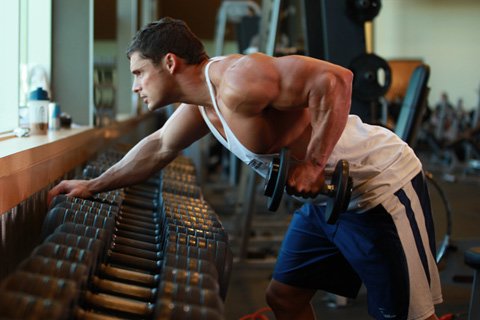
 Click To Enlarge.
Click To Enlarge. If You Perform The Majority Of Your Exercises On Machines,
Try Easing Your Way Into Free Weights One Exercise At A Time.

4. Women And Weight Training 
A lot of women avoid resistance training because they're worried about looking "bulky". Well, the simple truth is that there's really nothing to worry about. As anybody who seriously lifts weights will tell you, bulking up is not something that just happens.
It takes a long-term commitment to heavy lifting as well as the sustained capacity to consume colossal portions of food. Throwing in a session of resistance training once or twice a week will not create that "bulky" look many women fear so much. It will however make you stronger and help you get that coveted "toned" look.

5. Core Stability And Strength 
Let's talk about abs for a minute. There are a lot of different machines out there that work your abs and it's easy to make them a habit. Don't forget though, body weight exercises are fantastic for core strength.If you're stuck on the machines, try a short Pilates routine for a change, or some intense body weight exercises such as bicycle crunches and hanging leg raises. You will be surprised at how difficult they are in relation to the machine exercises your body is used to.
 Click Image To Enlarge.
Click Image To Enlarge. Hanging Leg Raise
Click Here For A Video Demonstration Of Hanging Leg Raise.
There are a lot of great exercises for your abs to be done with the Swiss and Medicine balls as well. Your core muscles are recruited for just about every movement we make in life, so you want to make sure they get a good functional workout in the gym, if only once and awhile.

6. Consider Yoga As A Great Stretching Routine 
Are you someone who lifts lots of weights, but rarely stretches? You might be interested to know that your stiff, tense muscles may be holding you back. If you can't stand with your legs straight and touch your toes comfortably, you definitely need some work. There are many reasons to take advantage of a proper stretching routine.
It is difficult for blood to circulate through constantly tense muscles. Blood is the carrier of oxygen and the nutrients which repair and build muscle tissue. Blood also removes the toxins and waste products left in your muscles after exercise.
Stretching actually increases the blood flow (and hence nutrient supply) to all the parts of your muscles thereby reducing soreness after your workouts. It also reduces your risk of injury, improves your posture and joint health, and increases your range of motion and general comfort.
Now, proper stretching doesn't mean holding a stretch for a few seconds after your last working set, there's a little more to it than that.
If you want to lean how to seriously get a good stretch, sit in on a Yoga class. Many gyms these days, especially the large chains offer Yoga classes and you can usually sit in on a couple of sessions for free.
Just tell the instructor you'd like to try it out for a couple classes. Remember, limber muscles are healthy muscles and healthy muscles respond quicker and better to training.

7. Make Your Cardio Interesting And Intense 
Moving on to cardiovascular fitness, this is a particularly interesting subject. Not all forms of cardio are created equal. Elliptical machines, for example, are extremely popular these days because they are easy on our joints, but studies have shown that given the machine's reliance on momentum, they are not very effective at burning calories.
There are better solutions available for those of you concerned with joint health. Swimming and aerobics are good alternatives that are low-impact and still give a great cardio workout. They're easy on the joints and work virtually every muscle in the body, especially your core, shoulders and legs.
On the other hand you might run 45 minutes a day no problem, which is great! You're obviously in shape. Next time though try the rowing machine for 30-45 minutes instead, or try some High-intensity interval training (HIIT).
HIIT training involves exerting maximum intensity efforts followed by short rest intervals, and is proven to be very effective at burning fat. When you change up the type of cardio you do you're shocking the muscles and your cardiovascular system, exposing them to conditions they're not used to.
If your gym has a heavy bag, you can get yourself a cheap pair of boxing gloves (major department stores carry them for $30-$40) and hit the heavy bag for your cardio session. This type of cardio is a different kind of workout than most others (running, biking, etc.) and you will feel it. Exposing your body to something new is one of the key's to sustained progress.
There are a lot of fun ways of getting a great workout, but unfortunately there are a lot people these days who stick to their same old routine day in day out.
Consistency is extremely important, but so is variety. Change is a great way to keep yourself from getting bored with your workouts and to keep your body guessing. There is no single system of exercise that has it all, each has strengths and weaknesses.
You don't have to try to be all things at once, and you can get and stay "fit" using only one. But there are many different ways of being fit. Don't limit yourself and don't be afraid to try something new.

